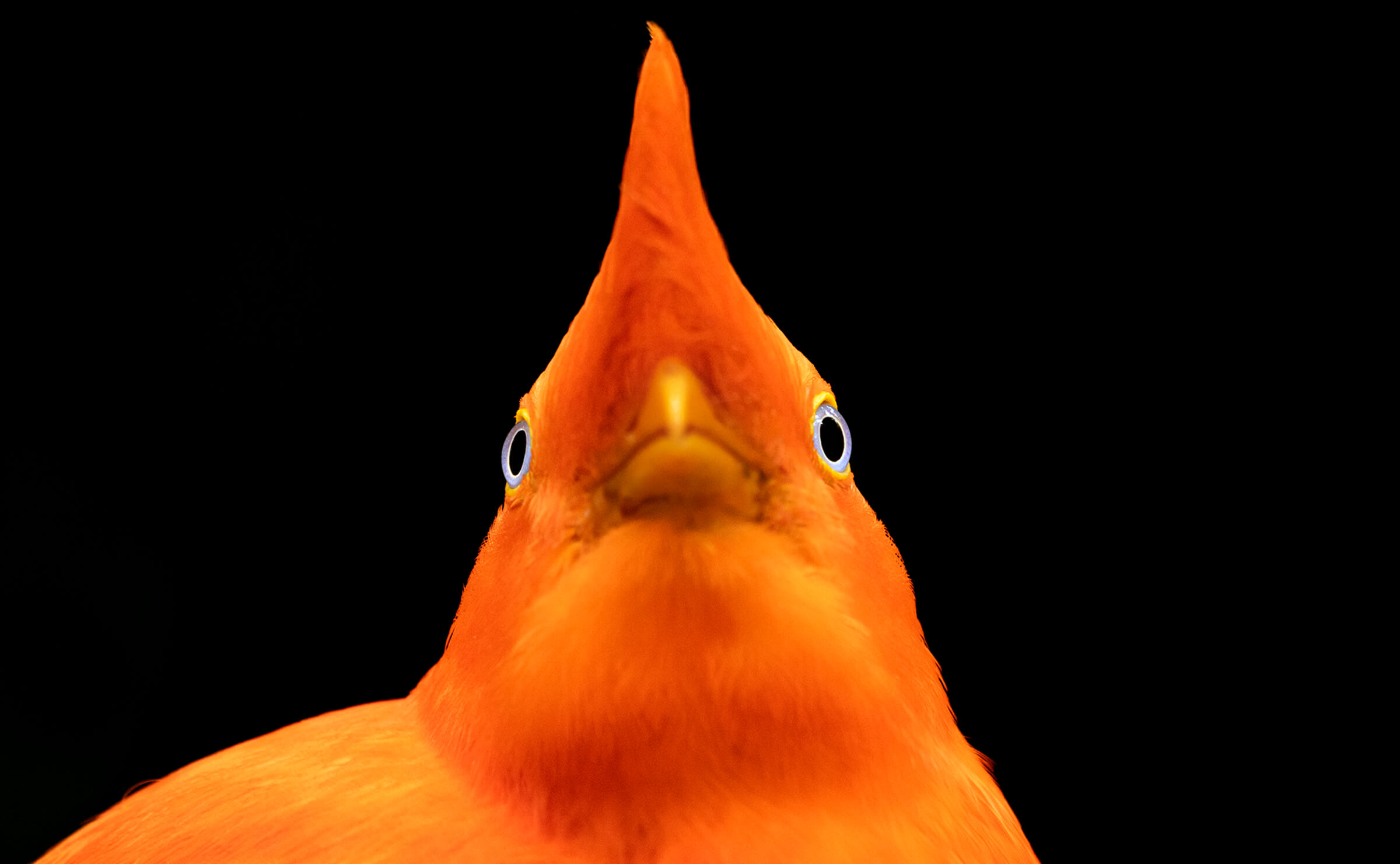BY Donna Parham
Photography by Ken Bohn
In the Zoo’s Parker Aviary, dappled sunlight flickers on lush vegetation, and a lazy mist swirls, thanks to a hidden fog machine. A peaceful scene—but not for long.
As a large, orange bird swoops under low branches and perches, his look-alike flutters to a neighboring branch. They glare at each other, hunched over with their heads low. One of the birds makes the raucous call first—it sounds something like a cross between a rooster’s crow and a pig’s grunt—and the other joins in. The boisterous confrontation that follows is a frenzied flurry of wing-flapping, head-bobbing, bouncing, bowing, and hopping, and it intensifies as an inquisitive brown female bird approaches. From time to time, both birds stop. Then they launch into another round.
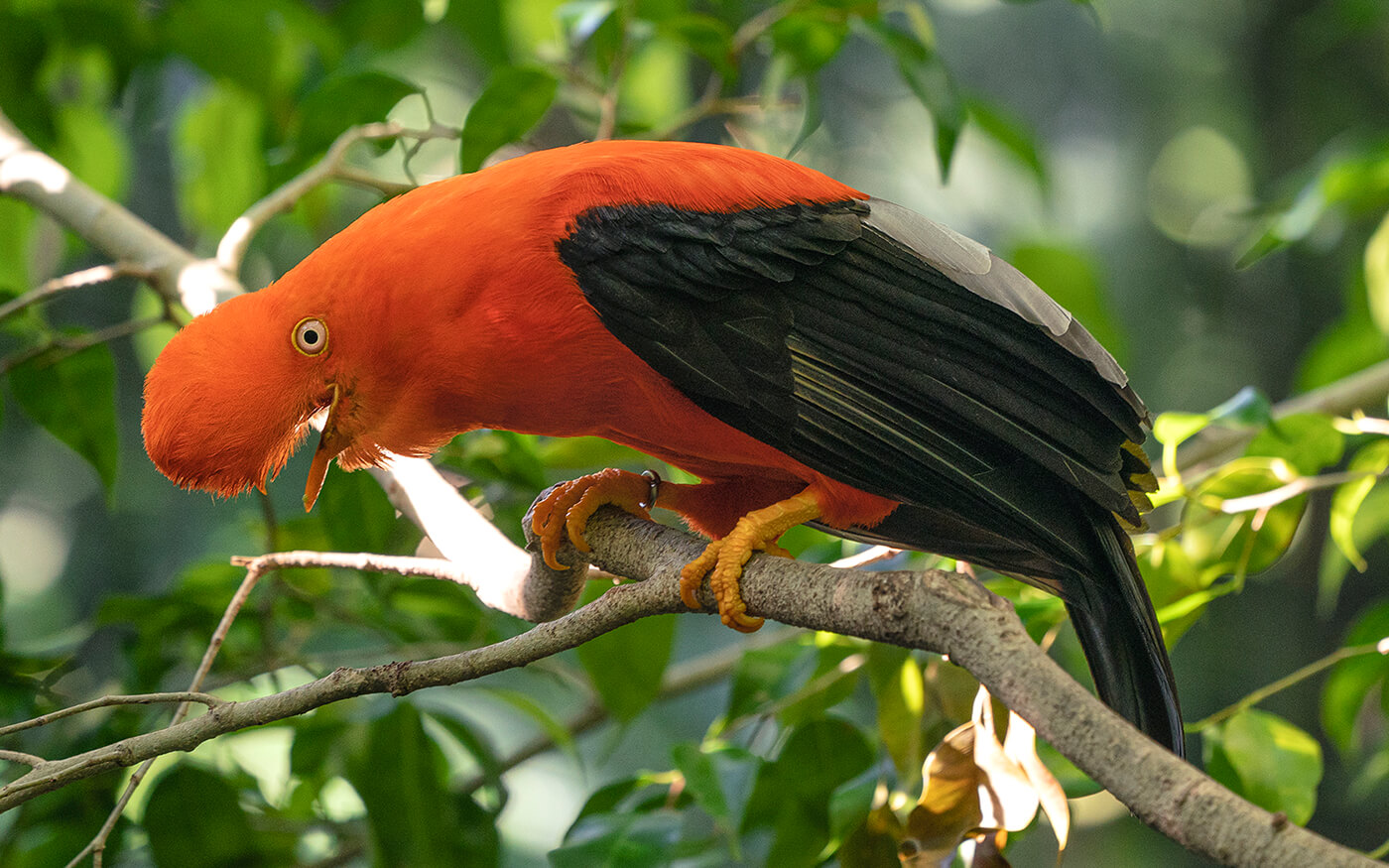
I LEK IT LIKE THAT
All the energy that a male puts into his lek display will be worthwhile if a female selects him for a mating partner.
Meet the Andean cock-of-the-rock Rupicola peruvianus. The two males are each doing their best to attract a mate in a ritualized display called a lek. Eric Arntzen, a senior keeper who has worked with the species for 20 years, explains. “Leks are like a dance-off to attract females.” Males establish and defend their own particular spaces within sight and sound of each other, and that’s where they perform their enthusiastic displays. In the wild, 15 or more males assemble, each in his own area, and face off in pairs or small groups.
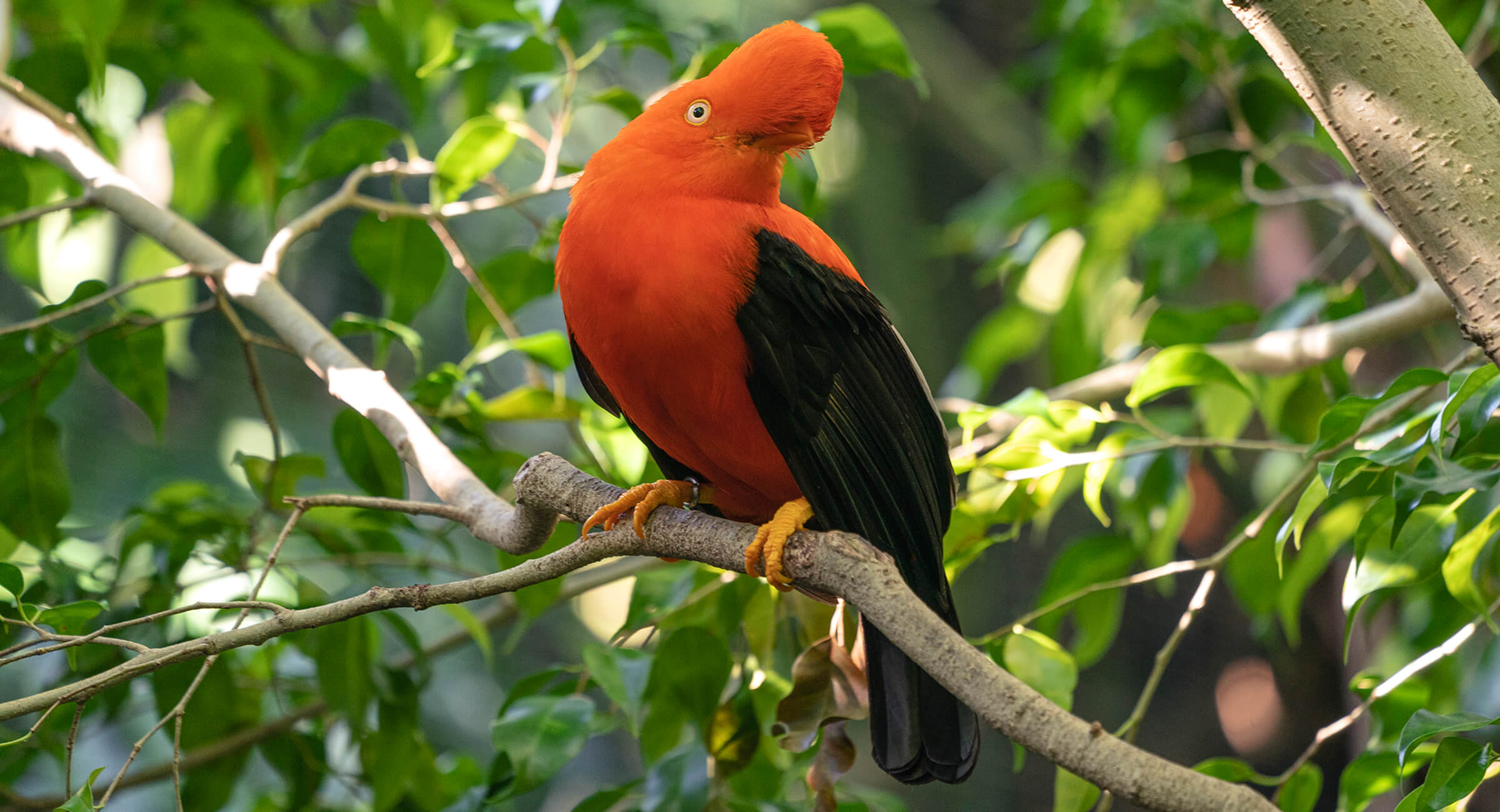
MORE THAN A GAME
Biologists define a lek as an area where birds (or other animals) gather for community courtship displays. Each male defends a small territory in order to attract females for mating. In a traditional lek, these territories are close enough for males to see and hear each other. In what’s called an “exploded lek,” birds are farther apart, but within auditory range. The term comes from the Swedish word leka, which translates to “play.” But make no mistake, this play is serious. Only males that are able to attract a female will ever have the chance to mate and pass their genes on to the next generation.
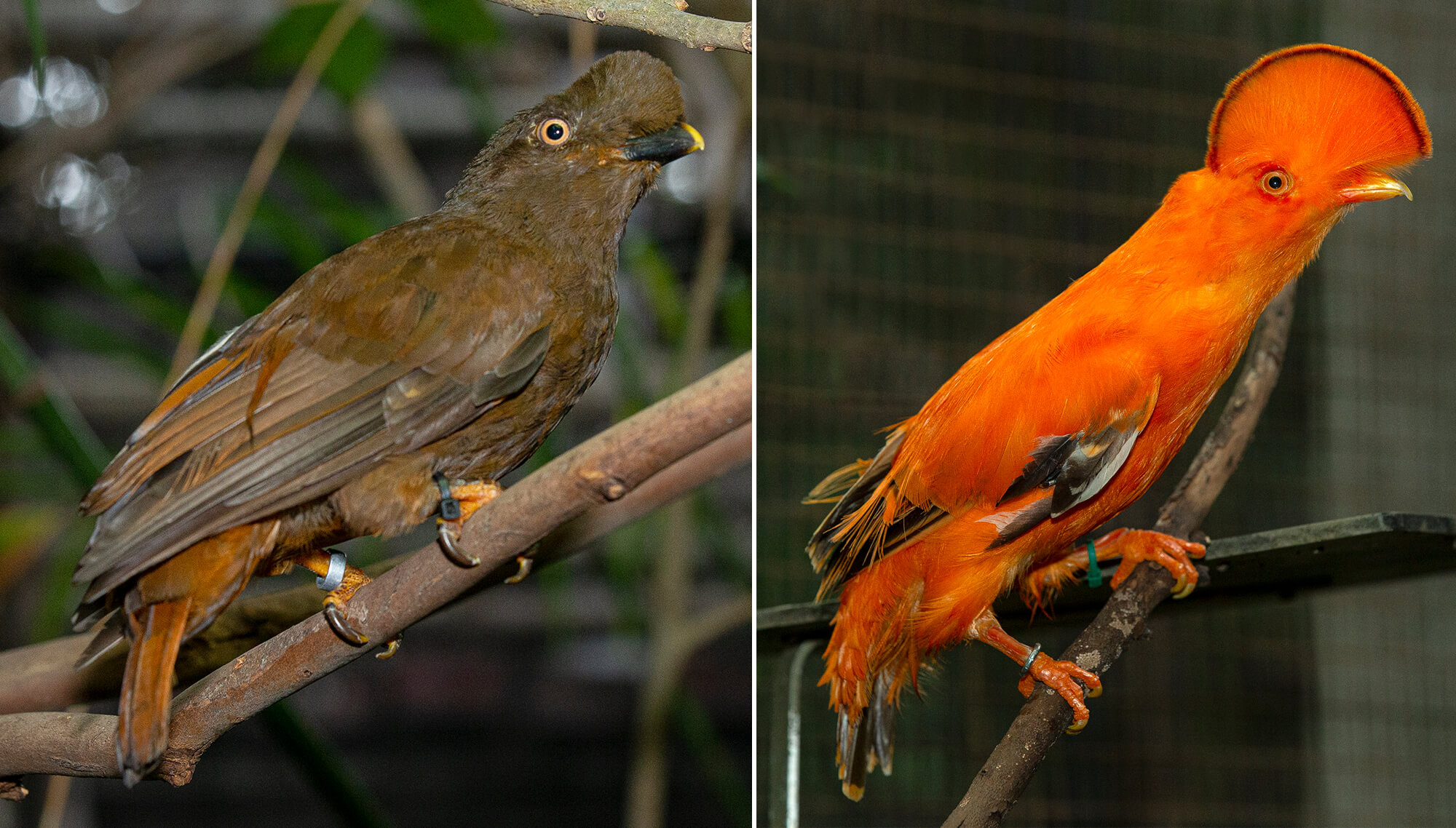
PRETTY BOY
A male Guianan cock-of-the-rock (right) has to look his best to attract a female (left). In this species, males have long fringes on some of their feathers and a distinct dark border at the edge of the crest. Females of this species (left) are smoky brown with grayish heads.
SOUTH AMERICAN SUITORS
The Andean cock-of-the-rock lives in tropical forests of the Andes Mountains, from Venezuela to Bolivia. A related species, the Guianan cock-of-the-rock Rupicola rupicola lives in humid forests of South America, but its distribution is more northerly, including parts of French Guiana, Guyana, Suriname, Venezuela, northern Brazil, and western Colombia. Both species favor rocky gorges and ravines that border rivers and streams.
While zoos have had more success breeding the Andean species, it’s the Guianan species that has been better studied in the wild. Instead of displaying on perches, each Guianan male establishes his own court on the ground. He maintains and defends a post in low branches overhead, and upon the arrival of a female, males flap down to their courts, crouch, and spread their brilliant, frilly plumage—each trying to make himself more irresistible than his neighbors.
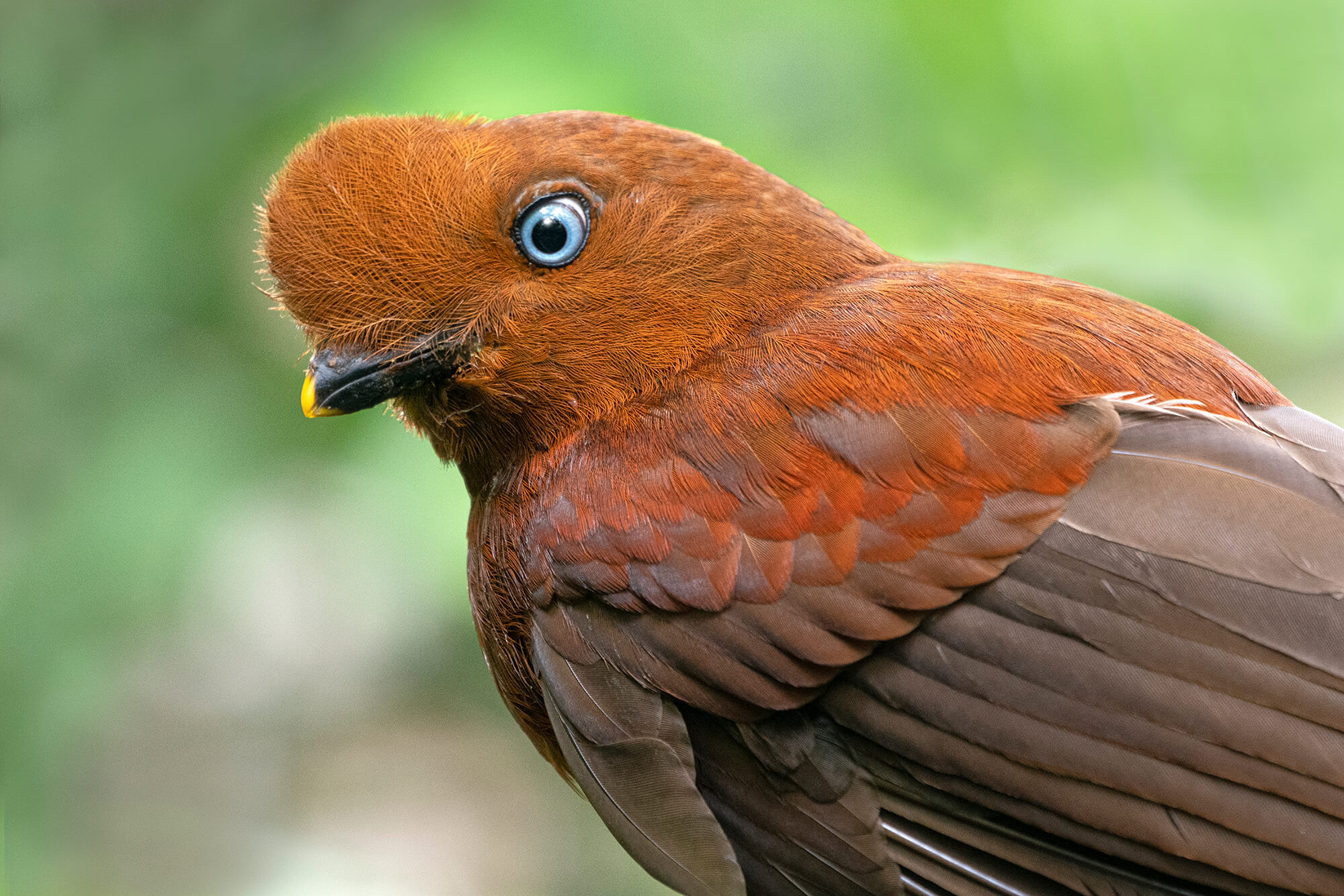
NOT-SO-CASUAL OBSERVER
A chestnut-brown female Andean cock-of-the-rock watches lek performers intently before settling on a mate.
LADIES’ CHOICE
After watching the courtship displays, a female chooses the mate she likes best, landing behind him to nibble at his feathers or peck his neck. Occasionally, males can get so single-minded about their display that they seem to forget why they’re doing it. “Sometimes they get so excited that the female has to really work to get the attention of the male,” Eric says. “We have even seen females mount a male or bite his neck to get his attention.”
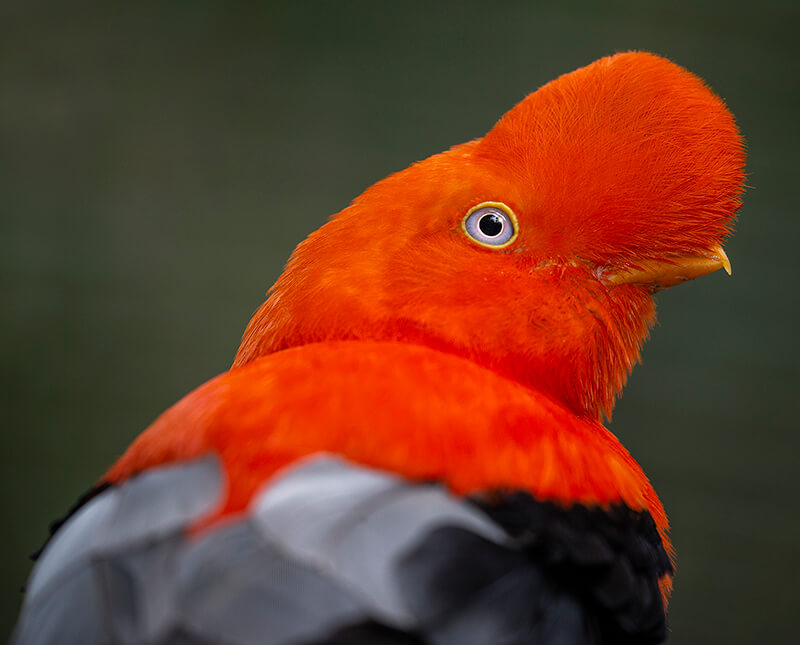
WHAT’S THAT ON YOUR HEAD?
A semicircular crest atop a cock-of-the-rock’s head almost hides its bill. A male’s crest is larger than a female’s.
Eventually, the male stops lekking long enough to hop around and mate with the interested female. Afterward, the female departs, and the male goes back to his spirited display—in hopes of attracting another female. Often, he does. Researchers have found that certain males attract more mates than other males do. At least some of their success comes from age and experience, something that starts even before they reach sexual maturity. “Young males try to participate in leks, usually at the edges,” says Dave Rimlinger, curator of birds at the Zoo. “They start early—within six months.”
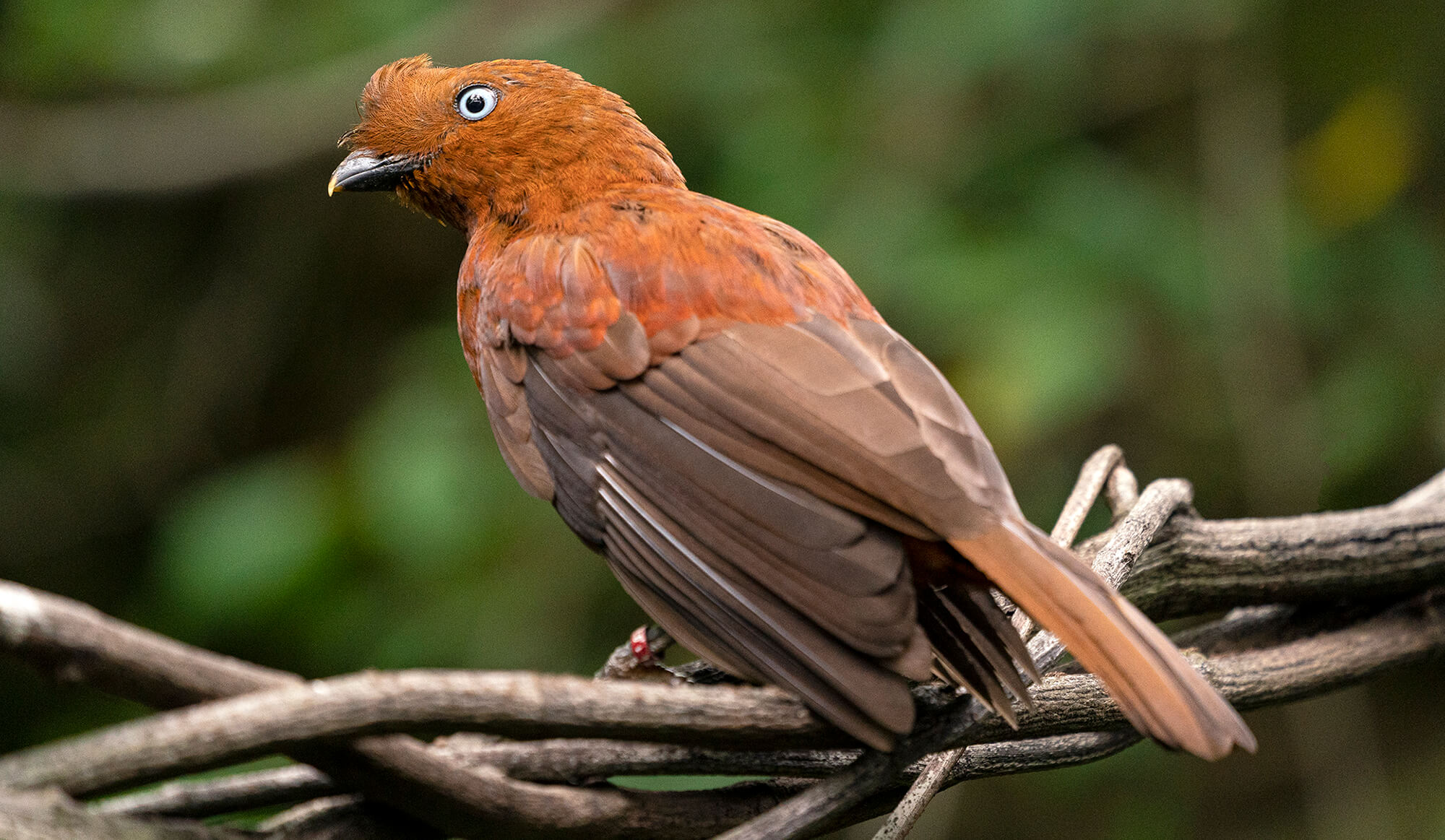
ROCK ON!
The genus name for this species refers to where the females nest. Rupicola comes from the Latin word rupe, which means “rock,” and the suffic –cola, which means “inhabitant.”
MEANWHILE, BACK AT THE CAVE
Females construct nests of mud and palm fibers attached to a vertical rock face, in caves or under overhangs. “Sometimes a female will work on a nest for a long time—months even,” says Dave. “Once they have it, they often reuse it, adding to it each year.” Only after her nest is complete does a female select a mate. After mating, she’ll lay one or two eggs and incubate them for about 28 days.
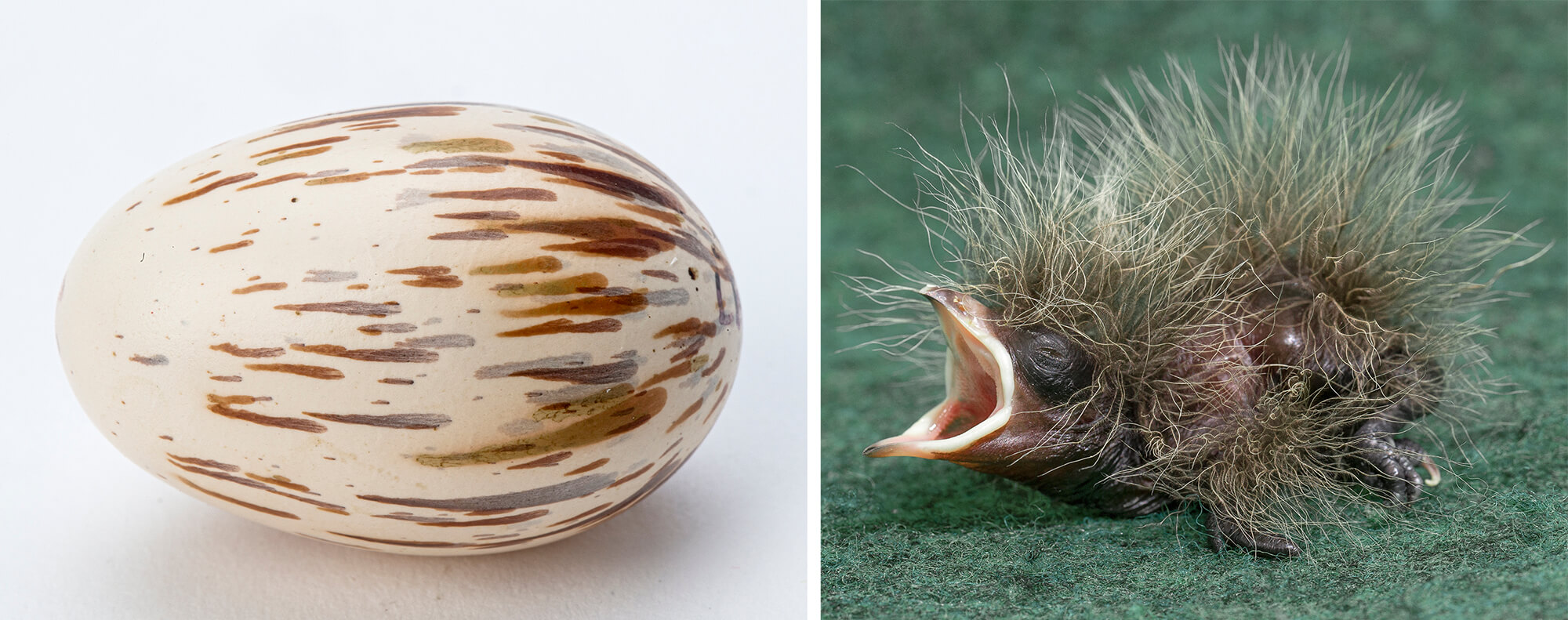
THE MUPPET SHOW
Newly hatched cock-of-the-rock chicks weigh less than an ounce, and they are extremely altricial—that is, they are quite undeveloped when they hatch, and require a parent to feed and care for them. Eric calls them “Fraggle-rock chicks,” after the muppets they resemble.
When they hatch, mom feeds her nestlings fruit, insects, and tiny reptiles and frogs. At the Zoo, the fruit-eating mother birds go wild for small anole lizards—but not for themselves. “Females take anoles from us only when they have chicks,” says Eric. Mama bird pushes the entire anole headfirst into her chick’s eager mouth.
ONE OF THE FIRST
In 1988, the Zoo became one of the first places to breed the Andean cock-of-the-rock—even though at the time, the birds were housed in the Scripps Aviary, which didn’t have rocky caves for nesting. “It was kind of a happy accident,” says Dave. The female found a just-right spot for her nest inside a dark keeper storage area that he says was “absolutely black without the light on.” The Zoo has seen 34 chicks hatch since, and today, amenities are much more elegant. “They need a dark area to nest,” says Eric. While some have been persuaded to nest in darkness created by tarps, they now build their nests inside custom-made concrete caves.
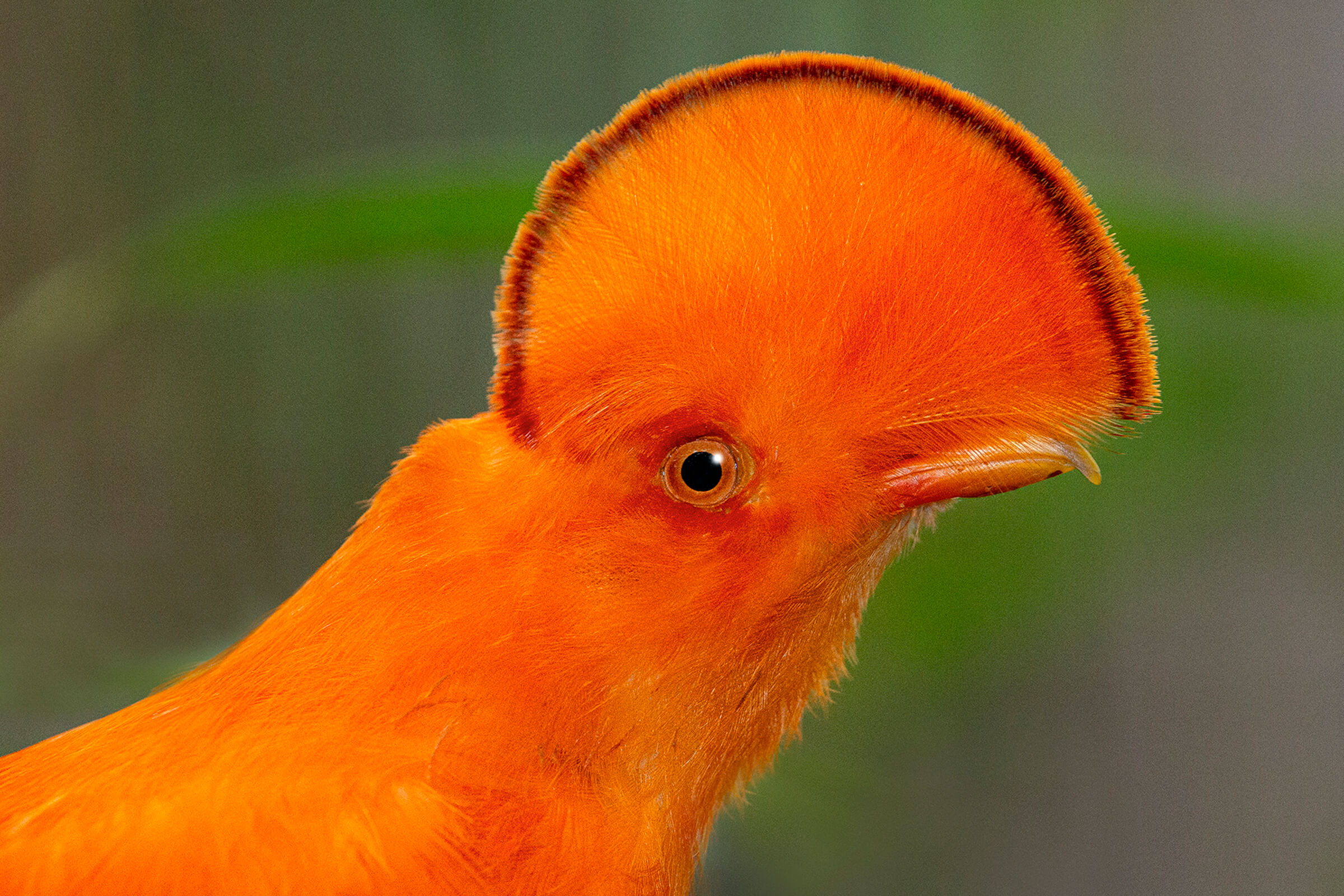
SAFETY FIRST
At its heart, a lek is a competition, and if the appearance of a female cues a male to display, the presence of another male heightens natural lek behavior. “You definitely get more displays if you have more males,” says Dave. But when rivalry is too intense, “lek species will fight,” he says. “In Suriname, Guianan males have been known to draw blood.” So, at the Zoo, adult males are separated by mesh. Though they can see each other—and encourage each other—they can’t reach each other.
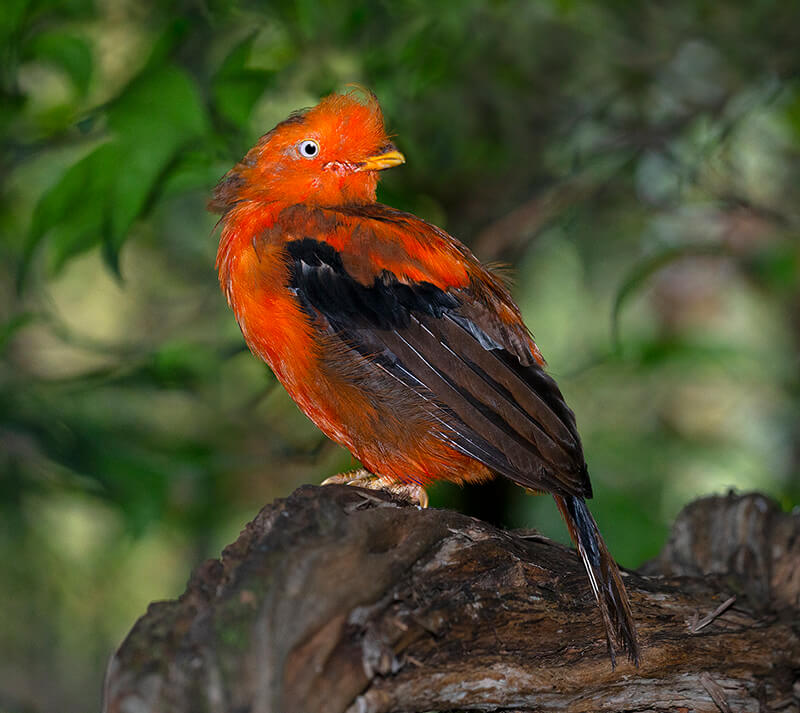
WATCH AND LEARN
Too young for breeding, a juvenile male Andean cock-of-the-rock that hatched at the Zoo is still developing his adult plumage. Still, he sometimes tries to join in when the adult males start their lekking behavior. Such socialization is good for the youngster’s development.
Keepers make sure to keep chicks safe, too. “In the wild, chicks and fledglings are nowhere near the leks—nests are in ravines and under boulders,” Dave points out. “A lek site is dangerous for chicks.” So, before a chick is ready to leave the nest, keepers move mom and chick from their nesting cave to a separate enclosure inside the main aviary. Chicks and adult males are able to see and hear each other, and “after several weeks, we bring them back into the main aviary so the chick can be part of the flock,” Dave says. “Keeping them together for several years after that is good for the younger bird’s development.”
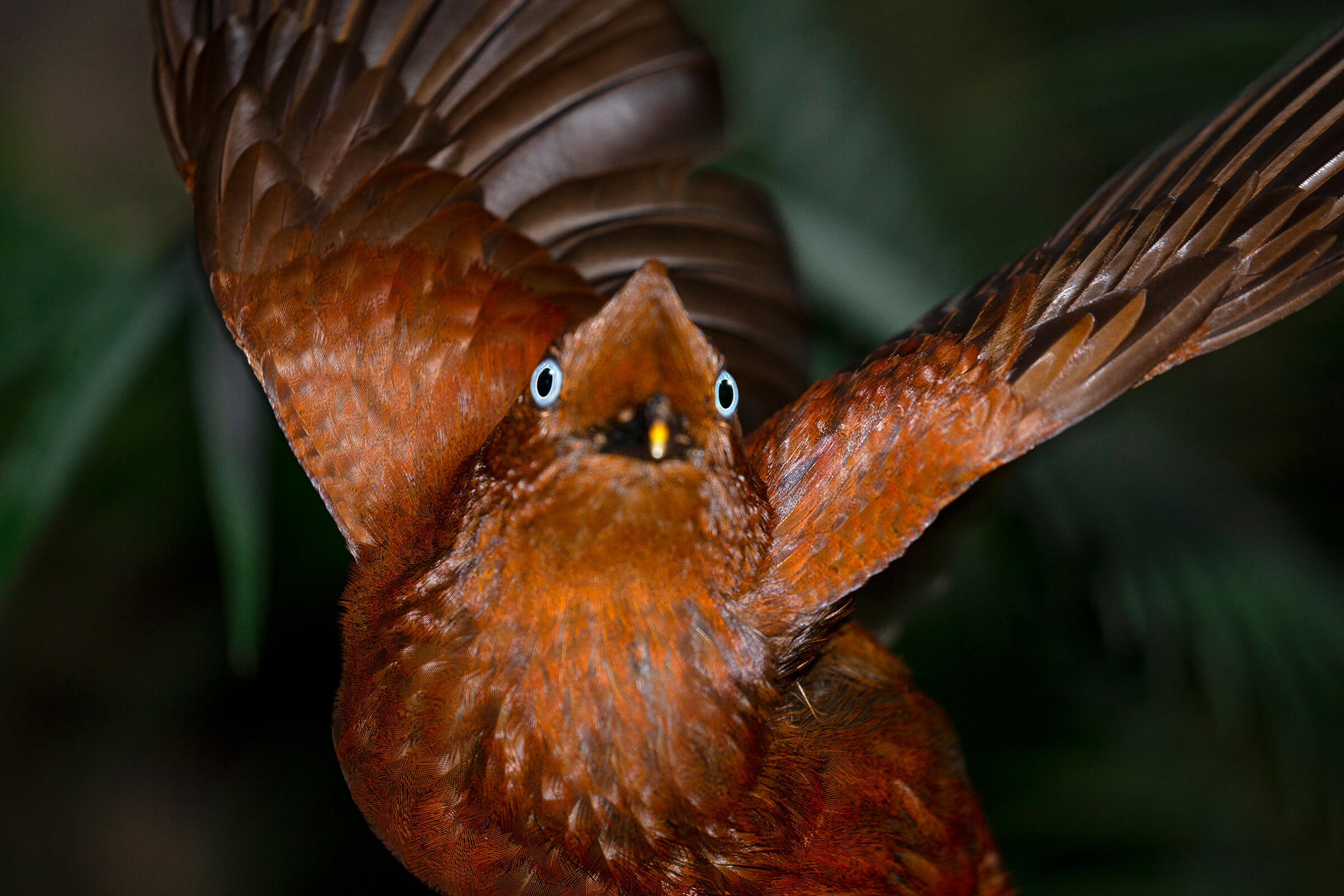
WHAT’S NOT TO LEK?
In the wild, lek species have time-honored display areas that are used for generations. The older the lek, the larger it becomes, and the more breeding birds it attracts. “Lek behavior is one of my favorite mating systems in birds,” says Dave. “While they are lekking, birds are not concerned about people—they are so focused on their display and on each other. At a lek, you can watch wild birds at close range.” The same thing is true at the Zoo, where astonished visitors can hear the clamor and see the colorful commotion up close.

